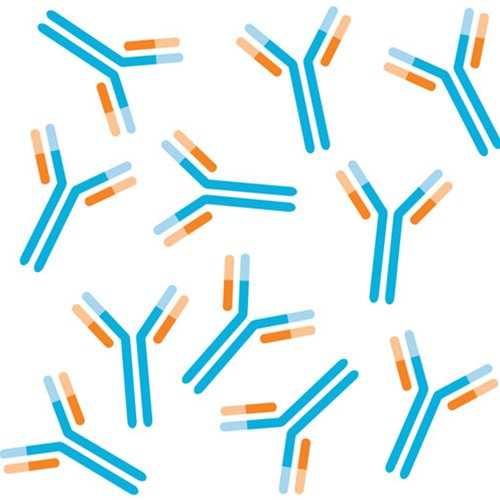Anti-BAP1 Antibody
This rabbit IgG polyclonal antibody was generated against a human BRCA-1 associated protein (BAP1) polypeptide and recognizes human BAP1.
Highlights:
- Specific for human BAP1
- Recommended for Western Blot and Immunoprecipitation applications
BAP1 interacts with BRCA1 and interferes with BRCA1 E3 ubiquitin ligase function. BAP1 is a deubiquitinating enzyme that mediates deubiquitination of histone H2A and HCFC1. BAP1 is a tumor suppressor, it binds to the BRCA1 RING finger and enhances BRCA1-mediated cell growth suppression and regulates of cell growth by mediating deubiquitination of HCFC1 N-terminal and C-terminal chains. BAP1 disrupts BRCA1 and BARD1 heterodimer activity by inhibiting their ability to mediate ubiquitination and autoubiquitination.
From the laboratory of Frank J. Rauscher, III, PhD, The Wistar Institute.
 Part of The Investigator's Annexe program.
Part of The Investigator's Annexe program.
This rabbit IgG polyclonal antibody was generated against a human BRCA-1 associated protein (BAP1) polypeptide and recognizes human BAP1.
Highlights:
- Specific for human BAP1
- Recommended for Western Blot and Immunoprecipitation applications
BAP1 interacts with BRCA1 and interferes with BRCA1 E3 ubiquitin ligase function. BAP1 is a deubiquitinating enzyme that mediates deubiquitination of histone H2A and HCFC1. BAP1 is a tumor suppressor, it binds to the BRCA1 RING finger and enhances BRCA1-mediated cell growth suppression and regulates of cell growth by mediating deubiquitination of HCFC1 N-terminal and C-terminal chains. BAP1 disrupts BRCA1 and BARD1 heterodimer activity by inhibiting their ability to mediate ubiquitination and autoubiquitination.
From the laboratory of Frank J. Rauscher, III, PhD, The Wistar Institute.
 Part of The Investigator's Annexe program.
Part of The Investigator's Annexe program.
| Product Type: | Antibody |
| Antigen: | BAP1 (BRCA-1 associated protein) |
| Accession ID: | Q92560 |
| Molecular Weight: | 80 kDa |
| Isotype: | IgG |
| Clonality: | Polyclonal |
| Reactivity: | Human |
| Immunogen: | BAP1 polypeptide |
| Species Immunized: | Mouse |
| Purification Method: | Affinity purified |
| Buffer: | BSA/sodium azide |
| Tested Applications: | WB (1:1000); IP (10mg per reaction) |
| Concentration: | 3mg/mL |
| Storage: | -20C, avoid freeze thaw cycles |
| Shipped: | Cold packs |
- Jensen DE, Proctor M, Marquis ST, Gardner HP, Ha SI, Chodosh LA, Ishov AM, Tommerup N, Vissing H, Sekido Y, Minna J, Borodovsky A, Schultz DC, Wilkinson KD, Maul GG, Barlev N, Berger SL, Prendergast GC, Rauscher FJ 3rd. BAP1: a novel ubiquitin hydrolase which binds to the BRCA1 RING finger and enhances BRCA1-mediated cell growth suppression. Oncogene. 1998 Mar 5;16(9):1097-112.
If you publish research with this product, please let us know so we can cite your paper.


